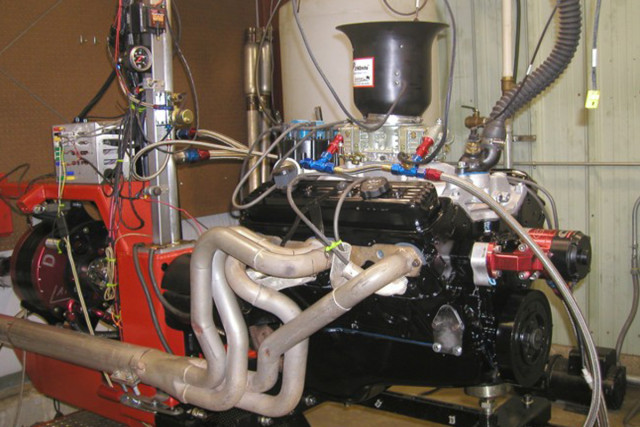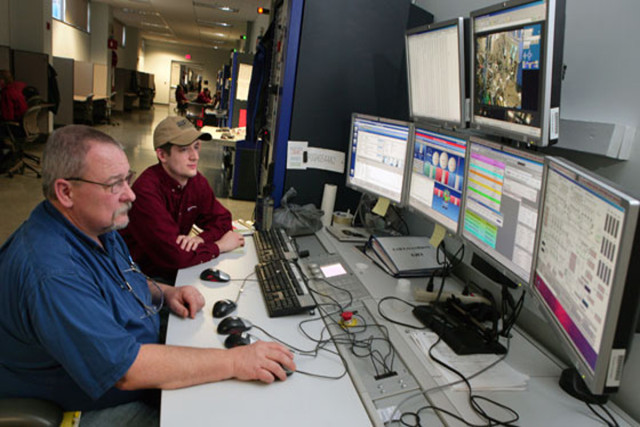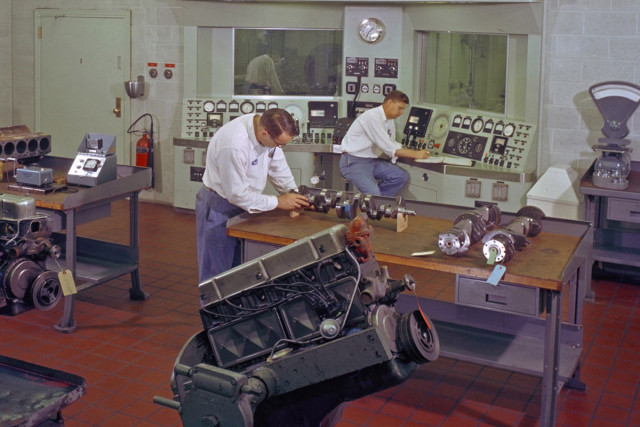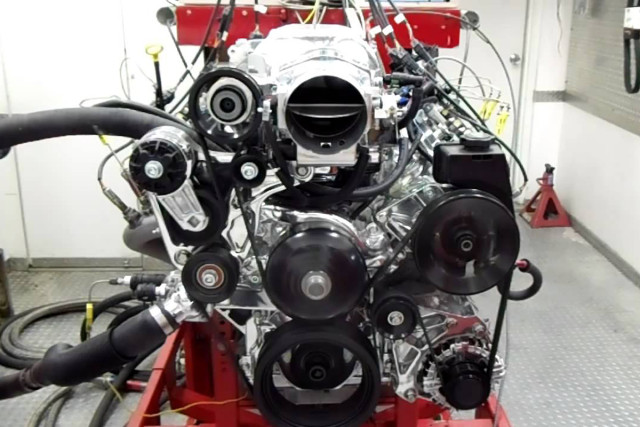There are a lot of rumors and incorrect information that is accepted as truth among car enthusiasts about how horsepower ratings were gathered in regards to classic cars. A long time ago, a rumor got started that suggests cars built before 1972 had their engines tested on an engine dyno, while those built after 1972, had their engine tested after it was installed in a car (on a chassis dyno). Part of that information is correct, and part of it is not even close to being correct.
It is true that before 1972, automotive manufacturers did test their engines on an engine dyno, and rated the horsepower of those engines by using a standard set of guidelines developed by the Society of American Engineers (SAE). This standard for testing (J245 and J1995), calculated the output of an engine while it was being run on a dyno. During this testing process, the engine was not operating any ancillary items like an alternator or water pump, and could benefit from the use of free-flowing headers, optimal ignition timing, and a correction factor for standard atmospheric conditions.

When magazines test engines for an article, they rarely have the engine running any accessories, headers are installed, and adjustments are made to fuel and timing to achieve the best results. This delivers a gross rating.
Starting in late 1972, the testing standards changed but the engines were still tested on an engine dyno, and not on a chassis dyno as many believe. In place of the previous standards, auto manufacturer’s adopted the SAE net rating methodology, SAE standard J1349. This new net rating outlined that the horsepower ratings were still obtained with the engine on a test stand, but the actual change is in regards to the testing parameters.
When achieving a net-horsepower number, the engine must be tested in as-installed condition, utilizing factory-specific ignition timing, carburetion, exhaust (including manifolds and mufflers), and other accessories like the alternator and water pump. In short, this delivers a closer approximation of how much power an engine produces as installed in the car.
While some of this decrease in horsepower can be attributed to lower compression ratios and a tuning of engines to prepare for unleaded gasoline, there is more to it. The switch in rating standards made it easier for salesmen to explain the loss of power that was caused by the reduced compression ratios and the addition of smog-control devices. Instead of saying the engine has less power, the salesman could say the testing standards have changed. Image trying to explain to a potential car buyer why the 1972 Chevelle he is looking at, delivers 20-percent less power than the 1970 model he’s trading in. By explaining the change in the rating process, the drop in power seemed like a non-issue to many.
The net rating system was used until 2005, when the SAE issued standard J2723. This standard clarifies the existing methodology, but also requires an independent observer be present when the testing is done.




















